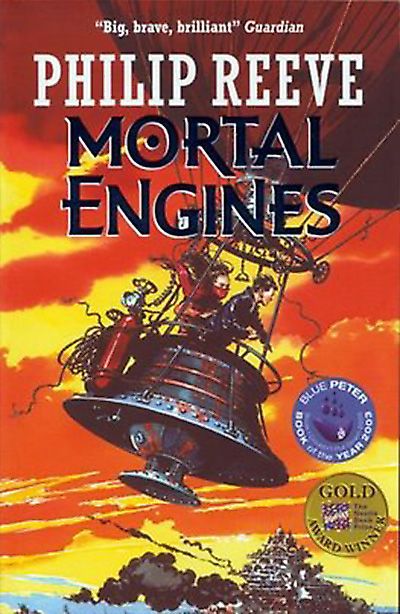
‘LONDON IS HUNTING ITS PREY.
For too long, London has been hiding in the hills, safe from bigger, faster, hungrier cities.
Now London must feed.
But as the chase begins, events within the walls take a sinister turn…’
I first came across the Mortal Engines Quartet when I was about 11/12 and was really enjoying my reading. At the time I did little other in my spare time than read, and this series kept me wrapped up in the post-apocalyptic world of Traction Cities for years as I revisited the stories again and again. That being said, it’s been well over 6 years since the last time I delved into Reeve’s brilliant novels, so, when I heard that one of my favourite film directors, the legendary Sir Peter Jackson, was reinventing the world on the big screen, I couldn’t wait to reread the books I had once loved so much.
Thankfully, I didn’t remember anything other than the broad strokes of the plot, which meant many of the twists and turns still surprised and delighted me. The memorable characters of Hester and Tom were still vivid to me, but I enjoyed being reintroduced to Valentine and his daughter Katherine as they were interesting plot points that I had lost over time. In fact, I have to be honest and say that when Toms naive worship of London began to grate on me, it was refreshing to return to Katherine and experience her grim determination into discovering the many secrets her father was entangled in. Although, her adoration of him soon wore thin and I was glad to see her grow out of his shadow and become her own very intriguing character, rather than just an extension of Valentine.
My favourite aspect of this work, however, was undoubtedly the world itself. The idea of traction cities is a fascinating one and the way Reeve pulled off the magnificent descriptions of both the towns and cities and the history that led to it was spell binding. I never once doubted the possibility of such a drastic measure being possible or utilised, and I loved all the theories of Municipal Darwinism and anti-tractionism that were debated by the characters. The images of the world the towns and cities trundled through versus the lush and green world of the anti-traction league were incredible to imagine (and, I hope, will be incredible to witness on screen).
My one biggest issue was that, due to Reeve focusing in on using characters to tell his story, mainly focusing on Tom, Katherine and Shrike, we were dumped into the middle of this astonishing world and thus were never really given the descriptive tour that I would have wanted. I wanted to have a really long view of London, its jobs, guilds and people. I wanted to know more about Anna Fang, and the world that she inhabited, her hopes and aspirations. I wanted to see what other British cities had survived, or if London was the only recognisable major European city left. I wanted to know whether any other iconic landmarks in London had survived Quirke’s great scheme, or if only St. Pauls was deemed worthy. I have so many questions and such a yearning for more, and this meant that I was left quite disappointed at the end of the book, that it was over before I had seen all I wanted to.
Having said that, I can’t find fault with the plot. It was brilliant, fast paced and evocative. This book is a thriller from beginning to end, and I can’t wait to see PJ do it justice.






